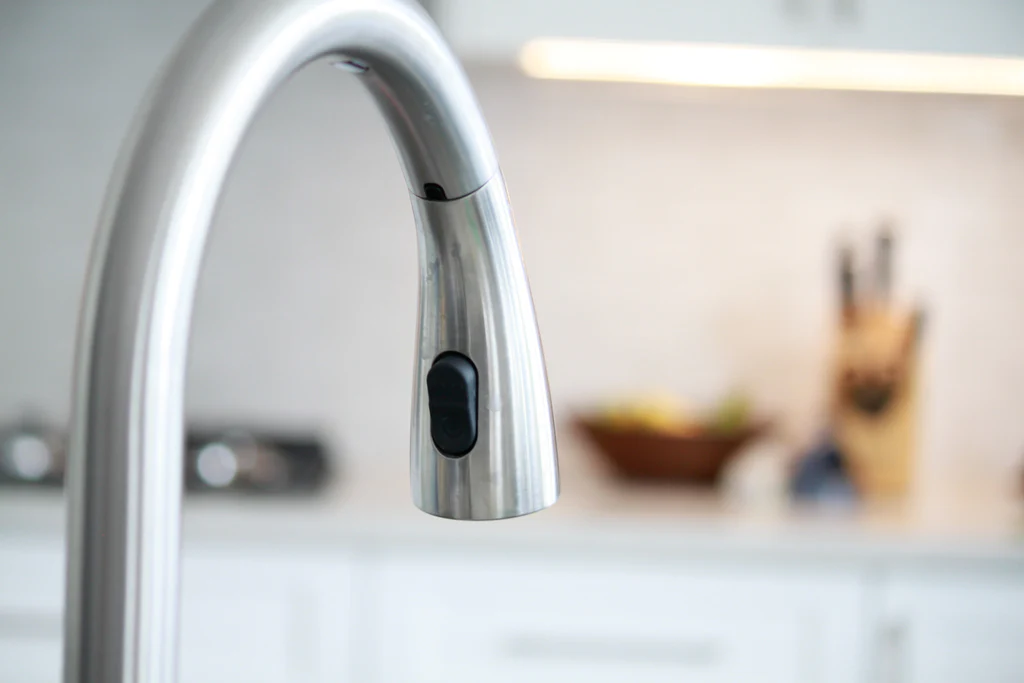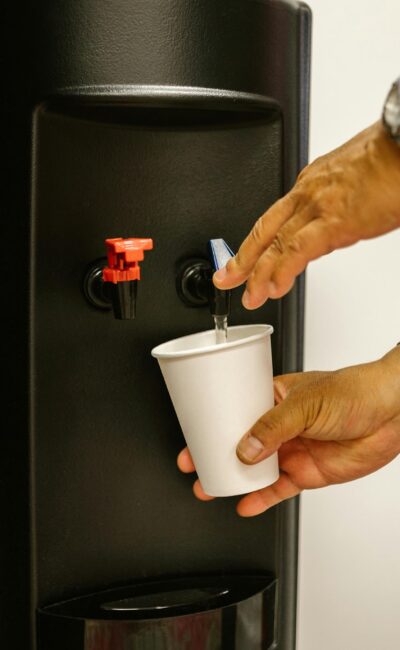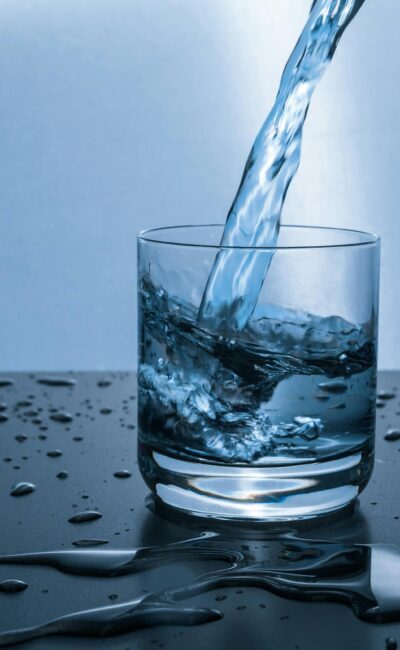Lead contamination in your home water supply is more common than you might think. Although the government banned using lead pipes in 1986, it’s been reported that an estimated 15 to 22 million Americans still cook with and drink tap water entering their homes through lead service lines.1 If you’re concerned about toxicity in your water supply, knowing how to test for lead can let you know if, and at what level, you may be at risk.
First, review your city’s annual water quality report. Known as a Consumer Confidence Report (CCR), this is prepared annually to let customers know which contaminants are found in public drinking water and at what levels. Other information found in the CCR includes2:
- Source of your drinking water
- Summary of contamination risk of your drinking water
- Regulated contaminants found in your drinking water
- Potential health effects of any contaminant found in violation of the EPA health standard
- Actions taken to restore safe drinking water
- Additional educational information and resources to learn more about the water systems and areas where contaminants may be of high concern
Each municipality is required to follow specific water treatment protection for local drinking water supplies. However, water quality varies due to the water sources available, age and quality of water lines, and environmental factors that can increase the presence of certain contaminants, including lead. Ultimately, the CCR for your city should let you know if and how much lead is currently present in your tap water and what actions are being taken to remove it.
A second way to identify lead in your home water supply is by requesting an at-home test. Each state and/or city water authority has a list of certified laboratories available that can test the quantities of lead in drinking water. The Environmental Protection Agency (EPA) recommends testing water every year for total dissolved solids, coliform bacteria, and pH levels, particularly if you’ve replaced or repaired pipes or other parts of your plumbing3.
When to Test Your Water for Lead
In addition to testing your home water supply out of precaution, there are a number of other factors to consider when deciding when to test your water for lead. These include:
- Age of your home and pipes
- Corrosion of pipes and plumbing materials
- Babies, infants, or pregnant women in the household
Older Home and Water Pipes
The EPA has reported homes built before 1978 have a high likelihood of containing lead-based paint. Since lead accumulates in the body over time, it can further expose your family when combined with the presence of lead in drinking water. An older home also is more likely to have lead-based plumbing fixtures or service lines.
Lead pipes still remain part of the public water supply infrastructure on a national level. What people may have thought was protection from lead exposure was actually only a reduction in it. Up until 2014, plumbing fixtures that still contained as much as eight percent of lead-by-weight could be legally labeled lead-free. This amount has since been reduced to .25 percent but increases the number of people whose homes may have lead-based pipes.4
Even if the pipes themselves aren’t made of lead, soldering that keeps the pipes together may be made of lead or alloys that contain lead. Due to the high level of toxicity, even minimal levels of exposure can be harmful to human health.
Corrosion of Pipes and Plumbing Materials
Corrosion is also common in older plumbing systems. This is the process of wearing away metal, allowing it to dissolve into the water and make its way to the tap. More corrosion leads to a higher risk of exposure. Whether this begins at the source of your city’s water system or is picked up through your home’s water pipes, detecting corrosion in plumbing systems and fixtures is a good reason to have your water tested for lead.
Presence of Babies, Children, and Pregnant Women
Additionally, lead exposure has a greater effect on babies, young children, and pregnant women than it does in adults. This is why drinking tap water while pregnant has become a regular discussion. A common cause of lead exposure is mixing formula with lead-contaminated tap water. This puts babies at higher risk due to the large volume of water consumed relative to their small body size.5
According to the EPA, low levels of lead exposure have been linked to damage to the central and peripheral nervous system in children. This often leads to learning disabilities, impaired hearing, and slowed growth. Additionally, although rare, ingesting lead can also cause seizures, coma, and become fatal.
Women who are pregnant may experience premature birth or reduced fetus growth due to the accumulation of lead from drinking water.2 Lastly, adults aren’t as susceptible to the health effects of lead toxicity, but it’s still possible that prolonged exposure can result in cardiovascular events, decreased kidney function, and reproductive problems.
These are a few of the main triggers that often lead people to get their home water supply tested for lead. However, if you suspect that you are at high risk of lead contamination, you can request the most recent CCR report or at-home testing from your water facility to confirm the level of lead in your home’s water supply.
Sources of Lead in Drinking Water
A home’s main water line is typically the main source of lead in drinking water.2 Lead pipes and lead plumbing fixtures are more likely to be found in older cities and homes built before 1986. Lead can leach into the water at any point, starting from the city’s main water source, all the way to your home’s pipes, faucets, and fixtures.
There are also a number of factors that affect the extent of which lead enters the water. One factor is how long water has been in the pipes. The longer water sits in the pipes, the greater risk for lead accumulation. The CDC recommends flushing your home’s pipes by running the tap for several minutes if the water has been off for longer than six hours.
An environmental factor that can lead to more exposure of lead content levels in your drinking water is nearby construction. Any city maintenance work can disturb your lead service line and allow more lead to be released to the main water system, which attaches to your home plumbing. Other factors include the amount of pipe corrosion, the amount of lead the water comes into contact with, and the level of acidity in the water.
For many, there is no way to avoid lead contamination, as city systems are rarely replaced or updated. And homes may have materials that contribute to the overall level of lead contamination as well. There are harmful health effects of lead in drinking water, but most people exposed to lead don’t present any symptoms.
If you think you’ve been exposed to lead in water, it’s best to contact your health care provider who can decide whether a blood lead level test is needed to detect for exposure or even lead poisoning, as well as any follow-up actions of what to do.
Eliminating Lead from Drinking Water
Knowing how to test for a lead hazard in your home water supply can confirm if your family is at risk. However, once detected, what are the options to making it safe to drink? To reduce exposure to contaminated water, the majority of people used to turn to the convenience of bottled water. However, the cost of relying on bottled water as the main source of drinking water has taken a toll on the environment and is no longer considered as convenient or cost-effective as it once was.
Furthermore, research has shown that nearly half of all bottled water is derived from tap water and is often less monitored or regulated than public water systems.6 It’s no longer a sustainable or reliable source of filtered water. The best way to avoid drinking lead-contaminated water is to implement a water treatment process at home to purify it at the time. It reduces the need for plastic and makes crisp, delicious drinking water readily available and always accessible.
The FloWater Faucet Filter easily attaches to most standard faucets, transforming tap water into great-tasting, purified water. This technology delivers a five-stage micro carbon block filter that reduces elevated levels of lead, mercury, and arsenic to undetectable levels. It also reduces fluoride to a safe ppm concentration. The Flowater Faucet Filter also removes any unpleasant odors or tastes typically present in tap water, leaving behind nothing but pure, fresh water. For more details on what to look for in a kitchen faucet be sure to check out our kitchen faucet buying guide.
Additionally, it’s easy to reserve the use of the Faucet Filter for drinking water and cooking and transition to tap water for cleaning, gardening, and other household activities. You can have fresh drinking water in your home to protect the health of your family, in addition to reducing your carbon footprint.
It’s not uncommon to find the presence of lead in your home water supply. Fortunately, there is the solution of purifying it at the tap. Reverse osmosis filters are a popular option in many homes. While reverse osmosis water benefits anyone who wants to ensure that they’re drinking extremely purified water, there is no way to prevent essential minerals from being filtered out. The FloWater Faucet Filter removes up to 99 percent of impurities, including lead, chemicals, bacteria, and viruses, and adds in healthy electrolytes and minerals. The result is a cleaner, better-tasting water quality experience that benefits you and your family.
Sources:
- Rosenthal, Lauren, and Will Craft. “How the EPA Has Left Americans Exposed to Lead in Drinking Water.” Buried Lead | APM Reports, APM Reports, 30 Oct. 2020, www.apmreports.org/story/2020/05/04/epa-lead-pipes-drinking-water.
- “Basic Information about Lead in Drinking Water.” EPA, Environmental Protection Agency, 9 Dec. 2020, www.epa.gov/ground-water-and-drinking-water/basic-information-about-lead-drinking-water.
- “Protect Your Family from Sources of Lead.” EPA, Environmental Protection Agency, 22 Dec. 2020, www.epa.gov/lead/protect-your-family-sources-lead.
- EPA Home Water Testing Facts. www.epa.gov/sites/production/files/2015-11/documents/2005_09_14_faq_fs_homewatertesting.pdf.
- “Lead in Drinking Water.” Centers for Disease Control and Prevention, Centers for Disease Control and Prevention, 18 Nov. 2020, www.cdc.gov/nceh/lead/prevention/sources/water.htm.
- Brodwin, Erin. “12 Facts That Show Why Bottled Water Is One of the Biggest Scams of the Century.” Business Insider, Business Insider, 20 Mar. 2019, www.businessinsider.com/bottled-water-facts-science-healthy-2017-4.




